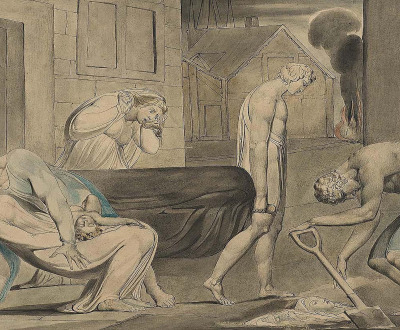Miscellany
In the Finnish runic epic Kalevala, Loviatar, the daughter of the god of death, is impregnated by the wind and gives birth to nine diseases: Consumption, Colic, Gout, Rickets, Ulcer, Scab, Cancer, Plague, and an unnamed disease, “the worst of the nine,” who is banished by his mother “to bewitch the lowland people, / to engender strife and envy.”


